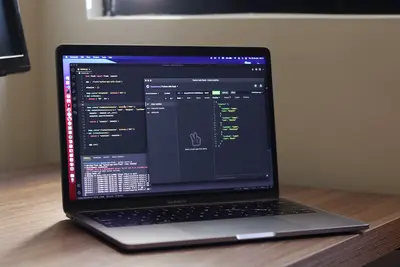💎 Pulp Repository Management on AlmaLinux: Artifact Storage Made Smart
Welcome to the heart of repository management! 🎉 Ready to manage software packages like a pro? Pulp is the powerful platform that makes repository management a breeze! It’s the engine behind many content management systems, including AlmaLinux’s own build system! Think of it as your personal artifact warehouse that can store, organize, and distribute any type of content! 📦✨
🤔 Why is Pulp Important?
Pulp transforms package chaos into organized repositories! 🚀 Here’s why it’s incredible:
- 📦 Multi-Format Support - RPM, Python, Container, Ansible, and more!
- 🔄 Smart Syncing - Mirror repositories efficiently!
- 💾 Artifact Storage - Store packages with deduplication!
- 🌐 Content Distribution - Serve content to thousands!
- 🎯 On-Demand Downloads - Save disk space intelligently!
- 🔌 Plugin Architecture - Extend for any content type!
It’s like having a universal package manager for everything! 🌟
🎯 What You Need
Before building your repository empire, ensure you have:
- ✅ AlmaLinux server (8 or 9)
- ✅ Root or sudo access
- ✅ At least 4GB RAM (8GB recommended)
- ✅ 50GB+ disk space for artifacts
- ✅ PostgreSQL database
- ✅ Redis for caching
- ✅ Love for organized repositories! 💎
📝 Step 1: System Preparation - Setting the Stage!
Let’s prepare AlmaLinux for Pulp! 🏗️
# Update system
sudo dnf update -y
# Install required packages
sudo dnf install -y python3 python3-pip python3-devel
sudo dnf install -y gcc make
sudo dnf install -y postgresql postgresql-server postgresql-contrib
sudo dnf install -y redis nginx
# Initialize PostgreSQL
sudo postgresql-setup --initdb
sudo systemctl enable --now postgresql
# Start Redis
sudo systemctl enable --now redis
# Configure PostgreSQL for Pulp
sudo -u postgres psql << EOF
CREATE USER pulp WITH PASSWORD 'PulpPass123!';
CREATE DATABASE pulp OWNER pulp;
GRANT ALL PRIVILEGES ON DATABASE pulp TO pulp;
EOF
# Edit PostgreSQL config for local connections
sudo sed -i "s/ident/md5/g" /var/lib/pgsql/data/pg_hba.conf
sudo systemctl restart postgresqlConfigure storage for artifacts:
# Create Pulp directories
sudo mkdir -p /var/lib/pulp/media
sudo mkdir -p /var/lib/pulp/assets
sudo mkdir -p /var/lib/pulp/tmp
# Create pulp user
sudo useradd --system --shell /bin/bash \
--home-dir /var/lib/pulp \
--comment "Pulp Service Account" pulp
# Set ownership
sudo chown -R pulp:pulp /var/lib/pulp
# Configure SELinux contexts (if enabled)
sudo semanage fcontext -a -t httpd_sys_content_t "/var/lib/pulp/media(/.*)?"
sudo restorecon -R /var/lib/pulp/Perfect! System is ready! 🎯
🔧 Step 2: Installing Pulp - Your Repository Engine!
Time to install Pulp 3! 🚀
# Install Pulp installer
sudo pip3 install pulp-installer
# Create ansible inventory
cat << EOF | sudo tee /etc/pulp/inventory
[all:vars]
pulp_default_admin_password=Admin123!
pulp_settings_databases__default__HOST=localhost
pulp_settings_databases__default__NAME=pulp
pulp_settings_databases__default__USER=pulp
pulp_settings_databases__default__PASSWORD=PulpPass123!
pulp_settings_redis_host=localhost
pulp_settings_redis_port=6379
pulp_content_bind=0.0.0.0:24816
pulp_api_bind=0.0.0.0:24817
[pulp]
localhost ansible_connection=local
EOF
# Run Pulp installer
sudo ansible-playbook -i /etc/pulp/inventory \
/usr/local/share/pulp_installer/playbooks/install.ymlManual Installation Alternative:
# Create virtual environment
sudo python3 -m venv /usr/local/lib/pulp
# Activate and install Pulp
source /usr/local/lib/pulp/bin/activate
pip install pulpcore pulp-rpm pulp-container pulp-ansible
# Create settings file
sudo mkdir -p /etc/pulp
cat << EOF | sudo tee /etc/pulp/settings.py
DATABASES = {
'default': {
'ENGINE': 'django.db.backends.postgresql',
'NAME': 'pulp',
'USER': 'pulp',
'PASSWORD': 'PulpPass123!',
'HOST': 'localhost',
'PORT': '5432',
}
}
MEDIA_ROOT = '/var/lib/pulp/media/'
WORKING_DIRECTORY = '/var/lib/pulp/tmp/'
CONTENT_ORIGIN = 'http://$(hostname -f)'
ANSIBLE_API_HOSTNAME = 'http://$(hostname -f)'
ANSIBLE_CONTENT_HOSTNAME = 'http://$(hostname -f)/pulp/content'
REDIS_HOST = 'localhost'
REDIS_PORT = 6379
SECRET_KEY = '$(openssl rand -hex 32)'
EOF
# Run migrations
sudo -u pulp /usr/local/lib/pulp/bin/pulpcore-manager migrate
# Create admin user
sudo -u pulp /usr/local/lib/pulp/bin/pulpcore-manager createsuperuser \
--username admin --email [email protected]🌟 Step 3: Configuring Pulp Services - Starting Your Engine!
Let’s set up Pulp services! 🎮
Create systemd services:
# Pulp API service
cat << EOF | sudo tee /etc/systemd/system/pulpcore-api.service
[Unit]
Description=Pulp API Server
After=network-online.target postgresql.service redis.service
[Service]
Type=simple
User=pulp
Group=pulp
WorkingDirectory=/var/lib/pulp
Environment="PULP_SETTINGS=/etc/pulp/settings.py"
ExecStart=/usr/local/lib/pulp/bin/gunicorn pulpcore.app.wsgi:application \
--bind 0.0.0.0:24817 \
--workers 4 \
--access-logfile -
[Install]
WantedBy=multi-user.target
EOF
# Pulp Content service
cat << EOF | sudo tee /etc/systemd/system/pulpcore-content.service
[Unit]
Description=Pulp Content Server
After=network-online.target postgresql.service redis.service
[Service]
Type=simple
User=pulp
Group=pulp
WorkingDirectory=/var/lib/pulp
Environment="PULP_SETTINGS=/etc/pulp/settings.py"
ExecStart=/usr/local/lib/pulp/bin/gunicorn pulpcore.content:server \
--bind 0.0.0.0:24816 \
--workers 4 \
--access-logfile -
[Install]
WantedBy=multi-user.target
EOF
# Pulp Worker service
cat << EOF | sudo tee /etc/systemd/system/[email protected]
[Unit]
Description=Pulp Worker %i
After=network-online.target postgresql.service redis.service
[Service]
Type=simple
User=pulp
Group=pulp
WorkingDirectory=/var/lib/pulp
Environment="PULP_SETTINGS=/etc/pulp/settings.py"
ExecStart=/usr/local/lib/pulp/bin/pulpcore-worker
[Install]
WantedBy=multi-user.target
EOFStart services:
# Reload systemd
sudo systemctl daemon-reload
# Enable and start services
sudo systemctl enable --now pulpcore-api
sudo systemctl enable --now pulpcore-content
sudo systemctl enable --now pulpcore-worker@1
sudo systemctl enable --now pulpcore-worker@2
# Check status
sudo systemctl status pulpcore-api
sudo systemctl status pulpcore-contentConfigure firewall:
# Open Pulp ports
sudo firewall-cmd --permanent --add-port=24816/tcp # Content
sudo firewall-cmd --permanent --add-port=24817/tcp # API
sudo firewall-cmd --reload✅ Step 4: Creating Your First Repository - Let’s Store Content!
Time to create and sync repositories! 📦
Install Pulp CLI:
# Install pulp-cli
pip install pulp-cli[pygments]
# Configure CLI
pulp config create \
--base-url http://localhost:24817 \
--username admin \
--password Admin123!
# Test connection
pulp status
# Should show service statusCreate RPM Repository:
# Create remote (upstream source)
pulp rpm remote create \
--name almalinux-baseos \
--url https://repo.almalinux.org/almalinux/9/BaseOS/x86_64/os/ \
--policy on_demand
# Create repository
pulp rpm repository create \
--name almalinux-9-base \
--description "AlmaLinux 9 BaseOS Repository"
# Sync repository
pulp rpm repository sync \
--name almalinux-9-base \
--remote almalinux-baseos
# Check sync status
pulp task list --limit 1Create Distribution:
# Create publication
pulp rpm publication create \
--repository almalinux-9-base
# Create distribution to serve content
pulp rpm distribution create \
--name almalinux-9-base \
--base-path almalinux/9/base \
--repository almalinux-9-base
# Content now available at:
# http://your-server:24816/pulp/content/almalinux/9/base/🌟 Step 5: Advanced Repository Management - Power Features!
Let’s explore advanced Pulp features! 🎯
Upload Custom Packages:
# Upload RPM to repository
pulp rpm content upload \
--repository almalinux-9-base \
--file /path/to/custom-package.rpm
# Create new version with uploaded content
pulp rpm repository version create \
--repository almalinux-9-baseContent Filtering:
# Sync only specific packages
pulp rpm repository sync \
--name almalinux-9-base \
--remote almalinux-baseos \
--include-packages "kernel,glibc,systemd"
# Exclude packages
pulp rpm repository sync \
--name almalinux-9-base \
--remote almalinux-baseos \
--exclude-packages "*-devel,*-debug"Mirror Management:
# Create mirror with immediate download
pulp rpm remote create \
--name epel-mirror \
--url https://dl.fedoraproject.org/pub/epel/9/Everything/x86_64/ \
--policy immediate
# Sync completely
pulp rpm repository sync \
--name epel-repo \
--remote epel-mirror \
--mirror true🎮 Quick Examples
Example 1: Python Package Repository
# Create Python repository
pulp python remote create \
--name pypi \
--url https://pypi.org/ \
--includes "django,flask,requests"
pulp python repository create \
--name python-packages
pulp python repository sync \
--name python-packages \
--remote pypi
# Serve Python packages
pulp python distribution create \
--name python \
--base-path python \
--repository python-packagesExample 2: Container Registry
# Create container repository
pulp container remote create \
--name docker-hub \
--url https://registry-1.docker.io \
--upstream-name library/nginx
pulp container repository create \
--name nginx-images
pulp container repository sync \
--name nginx-images \
--remote docker-hub
# Create distribution for containers
pulp container distribution create \
--name containers \
--base-path containers \
--repository nginx-imagesExample 3: Ansible Collections
# Create Ansible repository
pulp ansible remote create \
--name galaxy \
--url https://galaxy.ansible.com/api/ \
--requirements "collections:
- community.general
- ansible.posix"
pulp ansible repository create \
--name ansible-collections
pulp ansible repository sync \
--name ansible-collections \
--remote galaxy🚨 Fix Common Problems
Problem 1: Sync Fails
Symptom: Repository sync errors out 😰
Fix:
# Check worker status
sudo systemctl status pulpcore-worker@*
# Check disk space
df -h /var/lib/pulp
# Need sufficient space!
# View task details
pulp task show --href /pulp/api/v3/tasks/[task-id]/
# Retry with verbose output
pulp -v rpm repository sync \
--name almalinux-9-base \
--remote almalinux-baseos
# Check logs
sudo journalctl -u pulpcore-worker@1 -fProblem 2: Cannot Access Content
Symptom: 404 errors when accessing repositories 🌐
Fix:
# Check content service
sudo systemctl status pulpcore-content
# Verify distribution
pulp rpm distribution list
# Check publication
pulp rpm publication list \
--repository almalinux-9-base
# Recreate distribution
pulp rpm distribution destroy \
--name almalinux-9-base
pulp rpm distribution create \
--name almalinux-9-base \
--base-path almalinux/9/base \
--repository almalinux-9-baseProblem 3: Database Connection Issues
Symptom: Pulp services won’t start 🔌
Fix:
# Check PostgreSQL
sudo systemctl status postgresql
# Test database connection
sudo -u pulp psql -h localhost -U pulp -d pulp -c "SELECT 1;"
# Check Redis
redis-cli ping
# Should return PONG
# Verify settings
sudo -u pulp /usr/local/lib/pulp/bin/pulpcore-manager shell
>>> from django.db import connection
>>> connection.ensure_connection()📋 Simple Commands Summary
| Task | Command | Purpose |
|---|---|---|
| Check status | pulp status | System health |
| List repos | pulp rpm repository list | Show repositories |
| Create remote | pulp rpm remote create | Add upstream source |
| Sync repo | pulp rpm repository sync | Download content |
| Upload package | pulp rpm content upload | Add custom RPM |
| Create distribution | pulp rpm distribution create | Serve content |
| List tasks | pulp task list | View operations |
| Show versions | pulp rpm repository version list | Repository history |
| Clean orphans | pulp orphan cleanup | Remove unused content |
| Export repo | pulp rpm repository export | Backup repository |
💡 Tips for Success
🚀 Performance Optimization
Make Pulp blazing fast:
# Increase workers for large deployments
for i in {3..8}; do
sudo systemctl enable --now pulpcore-worker@$i
done
# Optimize PostgreSQL
echo "shared_buffers = 1GB" | sudo tee -a /var/lib/pgsql/data/postgresql.conf
echo "effective_cache_size = 3GB" | sudo tee -a /var/lib/pgsql/data/postgresql.conf
sudo systemctl restart postgresql
# Use Redis caching effectively
echo "maxmemory 2gb" | sudo tee -a /etc/redis.conf
echo "maxmemory-policy allkeys-lru" | sudo tee -a /etc/redis.conf
sudo systemctl restart redis
# Use on_demand policy for large repos
# Saves disk space and speeds initial sync🔒 Security Hardening
Keep Pulp secure:
- Use HTTPS - Always encrypt API traffic! 🔐
- Strong passwords - Complex credentials! 💪
- API tokens - Use instead of passwords! 🔑
- Restrict access - Firewall rules! 🛡️
- Regular updates - Keep Pulp current! 🔄
# Generate API token
pulp user token create --username admin
# Use token for authentication
export PULP_API_TOKEN="your-token-here"
pulp status📊 Storage Strategies
Optimize storage usage:
# Use deduplication
# Pulp automatically deduplicates artifacts
# Clean orphaned content regularly
pulp orphan cleanup --protection-time 7
# Monitor storage usage
du -sh /var/lib/pulp/media/artifact/
# Use on_demand for development
# Use immediate for production mirrors🏆 What You Learned
You’re now a Pulp repository expert! 🎓 You’ve successfully:
- ✅ Installed Pulp on AlmaLinux
- ✅ Configured services and database
- ✅ Created RPM repositories
- ✅ Synced upstream content
- ✅ Set up content distribution
- ✅ Managed artifacts and packages
- ✅ Mastered repository management
Your repository platform is production-ready! 💎
🎯 Why This Matters
Pulp transforms repository management completely! With your artifact platform, you can:
- 📦 Manage everything - Any content type supported!
- 🔄 Mirror efficiently - Smart syncing saves bandwidth!
- 💾 Store intelligently - Deduplication saves space!
- 🌐 Scale massively - Serve thousands of clients!
- 🎯 Control precisely - Filter and version everything!
You’re not just storing packages - you’re building a complete content distribution network! Every artifact is managed, every repository is optimized! 💎
Keep syncing, keep serving, and remember - with Pulp, repository management is powerful yet simple! ⭐
May your repositories sync quickly and your artifacts be always available! 🚀💎🙌




